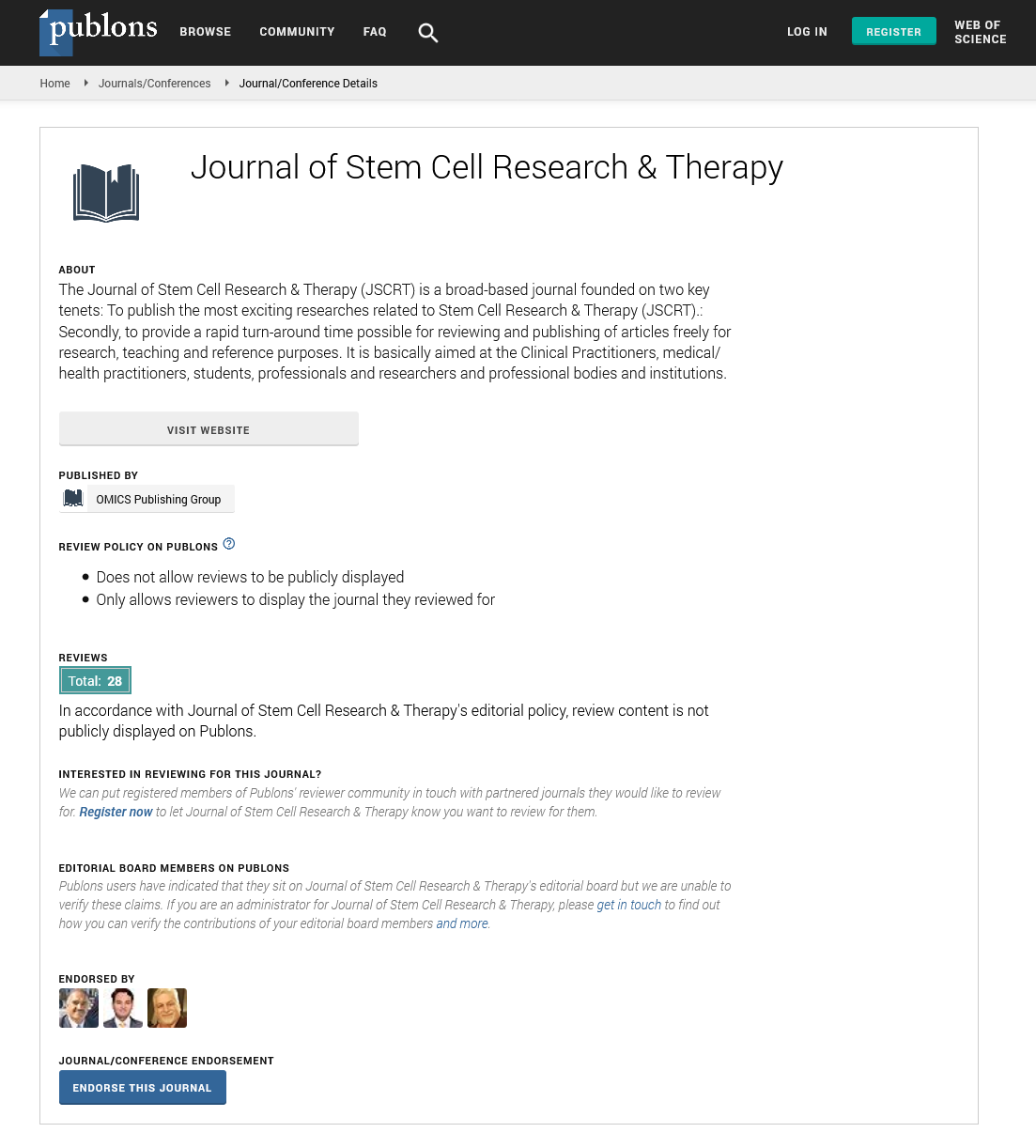Indexed In
- Open J Gate
- Genamics JournalSeek
- Academic Keys
- JournalTOCs
- China National Knowledge Infrastructure (CNKI)
- Ulrich's Periodicals Directory
- RefSeek
- Hamdard University
- EBSCO A-Z
- Directory of Abstract Indexing for Journals
- OCLC- WorldCat
- Publons
- Geneva Foundation for Medical Education and Research
- Euro Pub
- Google Scholar
Useful Links
Share This Page
Journal Flyer

Open Access Journals
- Agri and Aquaculture
- Biochemistry
- Bioinformatics & Systems Biology
- Business & Management
- Chemistry
- Clinical Sciences
- Engineering
- Food & Nutrition
- General Science
- Genetics & Molecular Biology
- Immunology & Microbiology
- Medical Sciences
- Neuroscience & Psychology
- Nursing & Health Care
- Pharmaceutical Sciences
Ecology and genetic susceptibility of HCV RNA in various isonym groups of Punjab, Pakistan
5th International Conference and Exhibition on Cell and Gene Therapy
May 19-21, 2016 San Antonio, USA
Rubi Ghazala and Muhammad Aslam Khan
Aga Khan University Hospital & University of Health Sciences Lahore, Pakistan
Posters & Accepted Abstracts: J Stem Cell Res Ther
Abstract:
Introduction & Rationale: Hepatitis C, a widespread infectious disease targeting circa 130 million people worldwide, is caused by the Hepatitis C Virus (HCV). HCV genome, consisting of 9,600 nucleotides, is fully sequenced. Population specific high variation in the HCV genome exists. HCV is classified into 7 different genotypes with several subtypes. Genotypes 1, 2 and 3 are found worldwide. Objective: To find out the ecology and genetics of susceptibility of HCV RNA in various isonym groups of the Punjab population Subjects & Methods: A sample of 349 chronic HCV hospital patients was studied who were already taking the treatment of standard therapy of Interferon+Ribavirin thrice a week. The sample was naturally divisible into three groups: Responder, the patients who received the standard therapy and recovered/cured; Relapser, the patients who, after a course of therapy became negative for HCV RNA but after sometimes (6-18 months) became HCV positive again; Non-responder, the patients who did not show positive response to therapy. Results: It was found that HCV genotype 3a is very common (84.0%) among the responders group while genotype 1a is more common in relapser (66.2%) and non-responders (54.0%). Five of the Six main genotypes, namely, 1a (61.40%), 2a (0.50%), 2b (20.00%), 3a (13.70%) and an Untypeable (4.40%) were found among the 12 different castes/tribes/isonym ethnic groups. Genotype 4 was not found. The HCV frequency in 12 isonym groups is as follows: Arain (15.26%), Gujjar (10.02%), Jutt (18.91%), Kashmiri (10.02%), Malik (10.44%), Mughal (3.21%), Pathan (17.19%), Rajput (11.46%), Sheikh (3.43%), and Sayyed (4.87%). Jutt caste was found to have the maximum infection of HCV, while the minimum was found in Mughals. Genotype 3a among responder was most common in Rajput caste. Among the relapser 1a is most prevalent in Jutts. Pathans top the list of non-responders having 1a and 2b. Genotype 2a was found only in one sample of Rajput, who was non-responder. Gene-polymorphism in IL-10 and IL-28B genes to ascertain the genetic susceptibility among various isonym groups revealed six SNPs. In IL-10, SNP at 1082 position, AA (14.5%), GA (80.30%) and GG (5.20%); SNP at 819, AA (3.2%), AC (84.7%) and CC (12.0%); and SNP at 592 position, AA (6.0%), CA (69.9%) and CC (24.1%). CA was in high frequency than CC and AA homologous gene polymorphism. In IL-28B SNP at location a, GG (4.8%), TG (40.6%), TT (54.6%); SNP at location b, CC (34.9%), CT (58.2%), TT (6.8%) and CC (40.2%), CT (43.8%), TT (16.1%) were found. Frequency of TT homologous high at one position, CT hetrozygous polymorphism was frequent at the second and third position. Conclusion: Human genetic susceptibility to HCV genotypes appears to be of importance in getting the infection. The study suggests that IL-10 and IL-28B interleukin genes are common in two major castes of the Punjab. A cohort study needs to be done for better understanding of human susceptibility to HCV infection and its management.
Biography :
Email: rubi.ghazala@aku.edu

